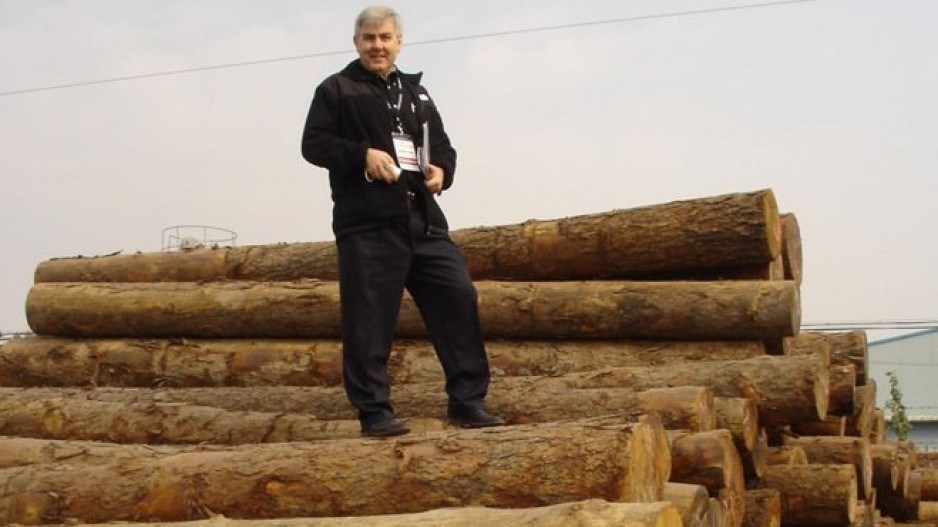Depending on whether or not you include pulp and paper, China was, until recently, the second biggest market for B.C. wood products.
If you include pulp and paper, it still is. But there has been a dramatic decline in lumber exports to China from B.C. in the last four years, and global wood markets analyst Russ Taylor does not expect things to improve much until 2025.
Taylor spent two weeks in China in October to try to understand what is going on with one of the world's biggest log and lumber consumers. He has partnered with the Australian forestry consulting firm Margules Groome to produce what will be the first comprehensive outlook for China’s lumber markets in several years.
“No one’s done a forecast on China for a number of years now,” Taylor told BIV News.
The new outlook – due to be published next month -- will forecast supply, demand and prices for logs and lumber in China out to 2035.
China continues to be a major buyer of B.C. pulp and paper. In 2022, China accounted for nearly half of B.C. pulp and paper exports -- $2.1 billion out of a total of $4.4 billion -- according to BC Stats.
Lumber is a whole other story – a story that is really about China's burst housing bubble.
Between 2012 and 2018, B.C. exported more than $1 billion worth of softwood lumber to China each year, according to BC Stats.
In 2019, lumber exports to China fell to $758 million and have continued to decline. In 2022, B.C. exported only $295 million worth of lumber to China.
Taylor said B.C. lumber exports to China peaked in 2013 at about 7 million cubic metres. In 2023, it will less than 1 million cubic metres, he said.
“That’s a function of lack of beetle wood for low grade that goes to China, and lack of demand for construction,” Taylor said.
Half of B.C. lumber exports to China were for construction lumber – the cheaper stuff used for things like concrete forming. Fifteen years ago, B.C. lumber producers had a plethora of cheap beetle-killed pine to unload, and China proved to be a timely buyer. But new home construction in China has fallen off in recent years, and B.C. producers have pretty much exhausted the supply of cheap beetle kill.
In 2019, new home construction in China peaked at 2.3 billion square metres, Taylor said. This year, it can be expected to be just 0.9 billion square metres.
“So, a huge, huge change in just four years,” Taylor said. “That’s what’s causing this reduction in logs and lumber imports in China.”
In 2021, China’s log imports peaked at 48 million cubic metres, and fell to 28 million cubic metres in 2023.
Russia, which had been a major supplier of logs to China, banned raw log exports in 2021. In 2007, Russia had 90 per cent market share for raw log exports, Taylor noted.
“Now they have zero.”
Northern Europe captured about 33 per cent of the market for log exports in 2021, Taylor said, thanks to an abundance of spruce bark beetle kill (similar to the situation in B.C. with the Mountain pine beetle), but much of that beetle kill is now used up. New Zealand is one of the few players left in the log market, Taylor said.
“They had like a 5 per cent market share in 2007. Now they have a 40 per cent share in 2021, and that will increase to over 60 per cent over the next number of years because they are the only stable supplier left with volume.”
Canada is a “marginal player” in the log market, with just three per cent of the world’s market share in 2021, Taylor noted.
Because China will not be able to access the logs it needs to make it own lumber as it has in the past, it will have to resort to importing more finished lumber, if its home construction industry picks up again.
“The only good news that I see is that China will be forced to purchase more lumber imports because they won’t have the logs,” Taylor said.
Right now, there isn’t a whole lot of confidence in the Chinese homebuilding sector. But Taylor expects things will start to improve in 2025.
“Consumer confidence is the problem," he said. "It’s lagging dramatically. So they’re going to inch it along, I think, and not over-react.
“It will probably bottom out in 2024 and then move again slowly upwards."





